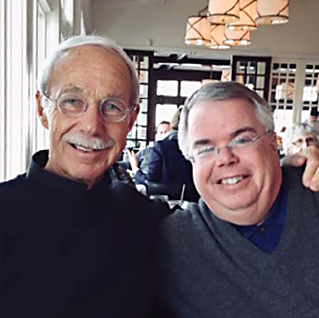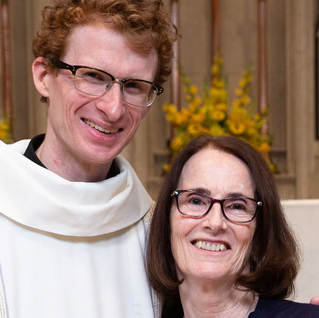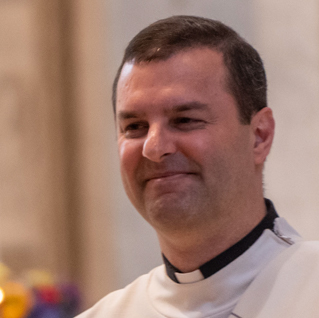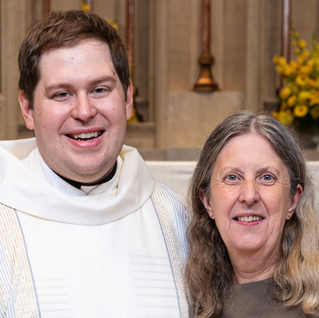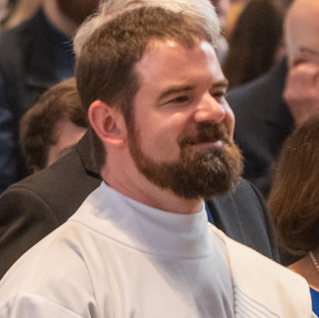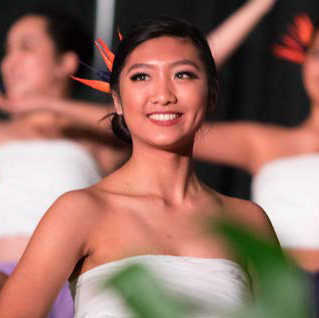
Celebrating Nearly 100 Years of the Special Connection Between Hawaii and Creighton University
By Amy Korpi, Staff Writer
We’ve all heard of first cousins, second cousins, even third cousins once removed. But “calabash cousins” might be a new phrase to readers in the Midwest.
What’s a calabash, you ask? In some definitions, it’s an evergreen tropical gourd tree or the gourd that comes from it. But in Hawaii, it is a large serving bowl, used on a buffet or in the middle of a dining table, as an attractive container or as a vessel for giving a gift—the way a basket might be used.
Informally, however, the phrase can evoke a close-knit community: People who are calabash cousins are like extended family, even though they’re not technically related. They might have grown up together, shared many meals, or been the children of close family friends. They might just be people from the same village, because the idea is that they come from the same calabash—the same pot. (Islanders also refer to such a connection as “?ohana,” which can include distant relatives, neighbors, and even the new person in town.)
For several decades, Nebraska’s Creighton University (CU) has been home to many calabash cousins from Hawaii.
SHOWING HOSPITALITY
It all started early in the 20th century— when Americans of Asian descent faced discrimination because of their ethnic background, resulting in many universities not being open to them. But that didn’t stop Wai Sinn Char, who was looking to start his dental education at a Catholic school in 1922. Creighton offered a welcoming environment, and word spread.
Then, following the 1941 attack on Pearl Harbor and lasting for the duration of World War II, US-born Americans of Japanese ancestry were banned from attending colleges and universities in areas on the West Coast called “exclusion zones.” This meant they could only seek post-secondary education further east, and even then, they were not always considered for admission.
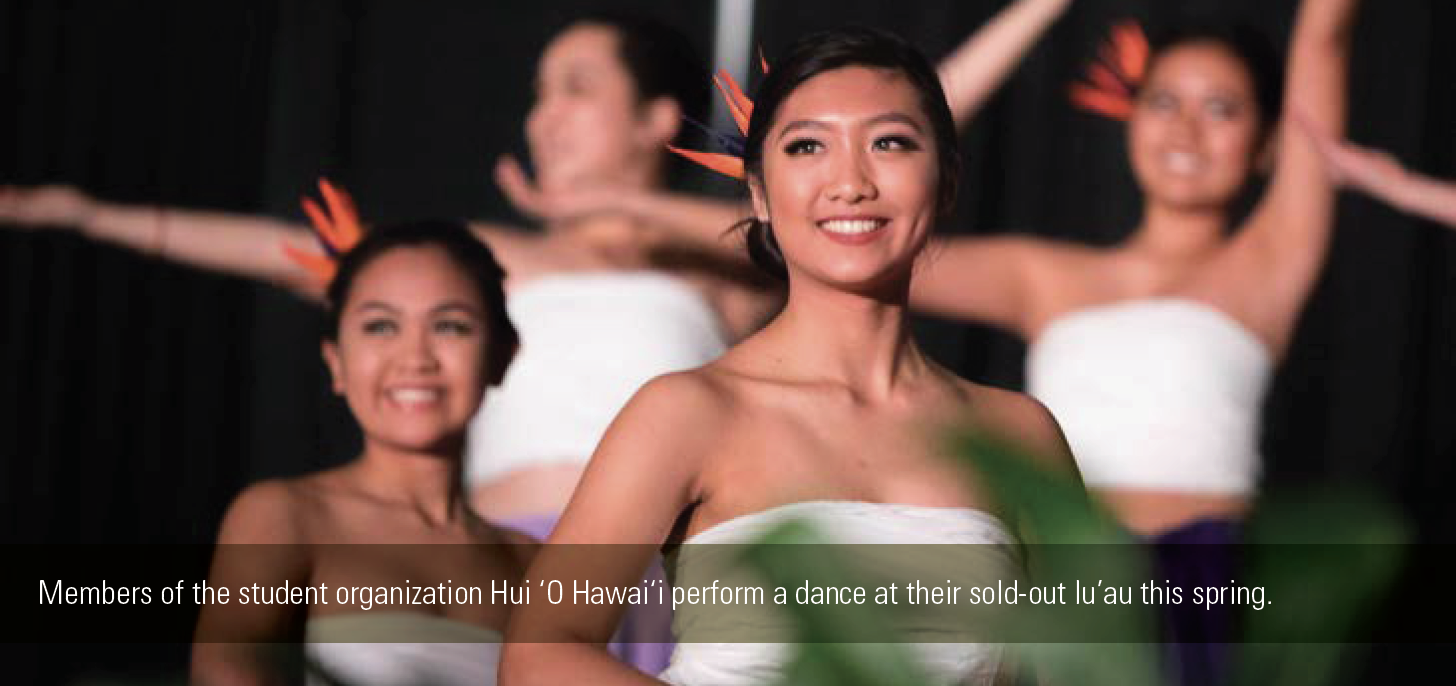 Creighton once again intentionally rejected riding the wave of popular discrimination. “We’ve always followed the Jesuit value of being accepting and treating everyone with dignity and respect, and we kept our doors open when some others didn’t,” explains Associate Director of Admissions Joe Bezousek.
Creighton once again intentionally rejected riding the wave of popular discrimination. “We’ve always followed the Jesuit value of being accepting and treating everyone with dignity and respect, and we kept our doors open when some others didn’t,” explains Associate Director of Admissions Joe Bezousek.
But rejecting discrimination and showing hospitality are not the same thing. Over the years, Creighton has also become known for its culture of inclusiveness and welcoming support for native and non-indigenous Hawaiians alike to continue engaging with their culture thousands of miles from home.
You could say that Creighton’s reputation has spread throughout the islands through the many calabash cousins who have attended.
RECONNECTING TO ROOTS
The strong connection between CU and Hawaii came as something of a surprise to Fr. Kyle Shinseki, SJ. The realization began early in his formation as a Midwest Jesuit, when he was sent to teach at Creighton Prep. Within a month of arriving in Omaha, the Honolulu-born and Kauai-raised novice began to meet people from the islands.
A few years later, he was missioned to CU to serve as coordinator for Asian/ Pacific Islander initiatives in the Office of Multicultural Affairs, chaplain and adjunct lecturer in the College of Business, and chaplain for a residence hall.
Lo and behold, sitting in the front row of his first marketing class was a calabash cousin—a fellow alumnus of his high school in Kauai. “I never expected to reconnect to my roots in Omaha, Nebraska,” Fr. Shinseki recalls, “but I certainly did so in more ways than this one remarkable coincidence.”
In his Multicultural Affairs role, he helped organize workshops, events, and liturgies that incorporated aspects of Asian American and Pacific Islander cultures. “Helping students express their cultural and religious heritage and feel
Members of the student organization Hui ‘O Hawai‘i perform a dance at their sold-out lu’au this spring.
at home at Creighton was a profound experience and one which helped to affirm my Jesuit vocation,” says Fr. Shinseki, who has since written a thesis about how Catholic lay associations in college can help foster and sustain students’ ethnoreligious identity.
SEEING SIMILARITIES WHERE OTHERS SEE DIFFERENCES
Some might say, “fine, Creighton offers a welcoming atmosphere, but what about the multiple time zones and obvious topographical and climate differences?”
Father Shinseki notes interesting similarities that overcome these contrasts. “When I was in high school in Hawaii, Future Farmers of America was our largest student group,” he explains. “The landscapes, and we, might look a little different, but Hawaii and Nebraskan cultures were largely built on an agrarian system, where there is a close relationship to the land.”
Social values are also similar, he adds, with people typically being straightforward: “What you see is what you get.”
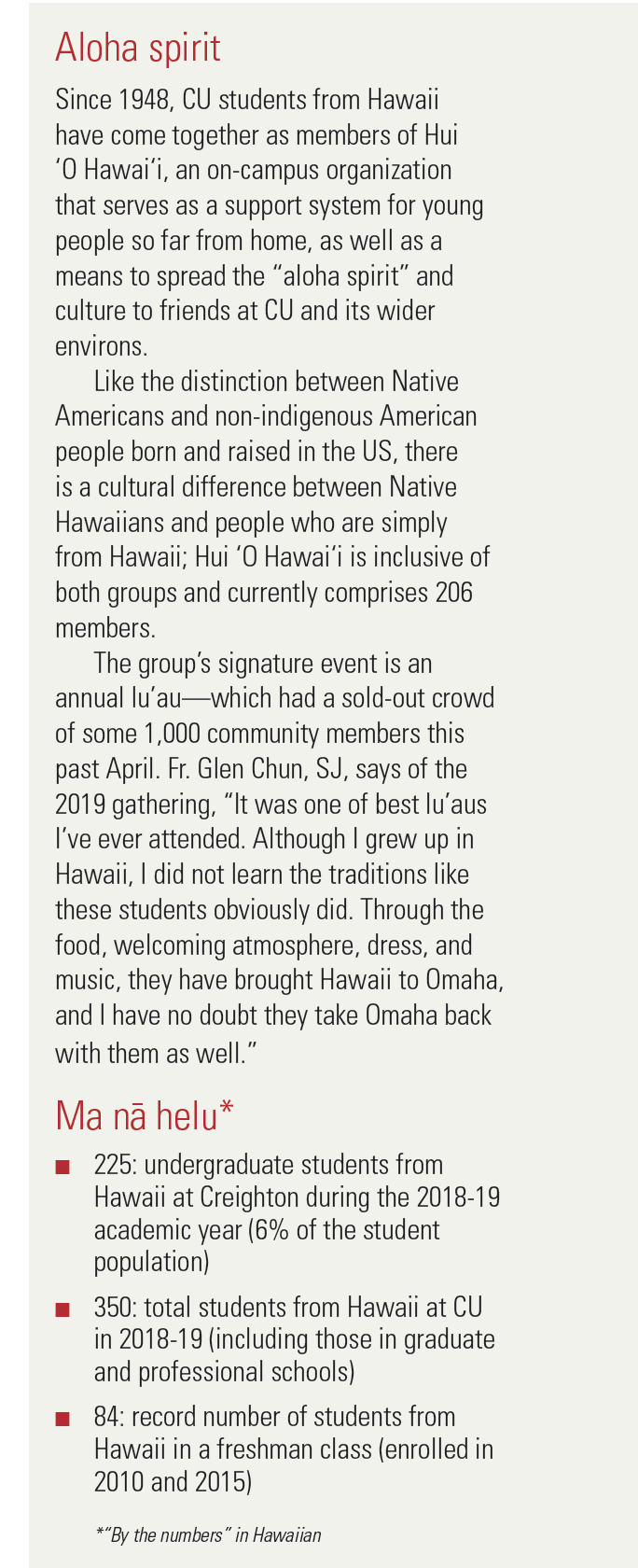
REACHING OUT LEADS TO RECORD NUMBERS
By the 1990s, Creighton enrolled around 20 new students from Hawaii each year. That number more than tripled in the next 10-plus years, however, as admissions representatives began visiting the islands more.
“We pride ourselves on our personal connections to our students, and this is especially important in Hawaii,” says Bezousek. To this end, CU hosts an orientation for incoming freshmen in Hawaii each summer, as well as a welcome event on campus in the fall.
As a result, in recent years, Hawaii has ranked in the top eight among the states with the largest enrollment at Creighton. In CU’s largest college, Arts & Sciences, Hawaii is the fifth largest state from which students originate—ranking it behind only Nebraska, Iowa, Minnesota, and Colorado.
Harkening back to Wai Sinn Char, professional schools also remain a big draw. And many undergraduates attend to study health sciences, for which CU’s reputation is strong on the islands.
Calabash cousins also continue to be a strong influence. Through the Creighton ?Ohana Connection, a group of current-student parents support incoming students’ families with their transition to CU. And each October, upper-class students from Hawaii take freshmen to shop for winter coats (which are much less expensive in Nebraska than they are in Hawaii!).
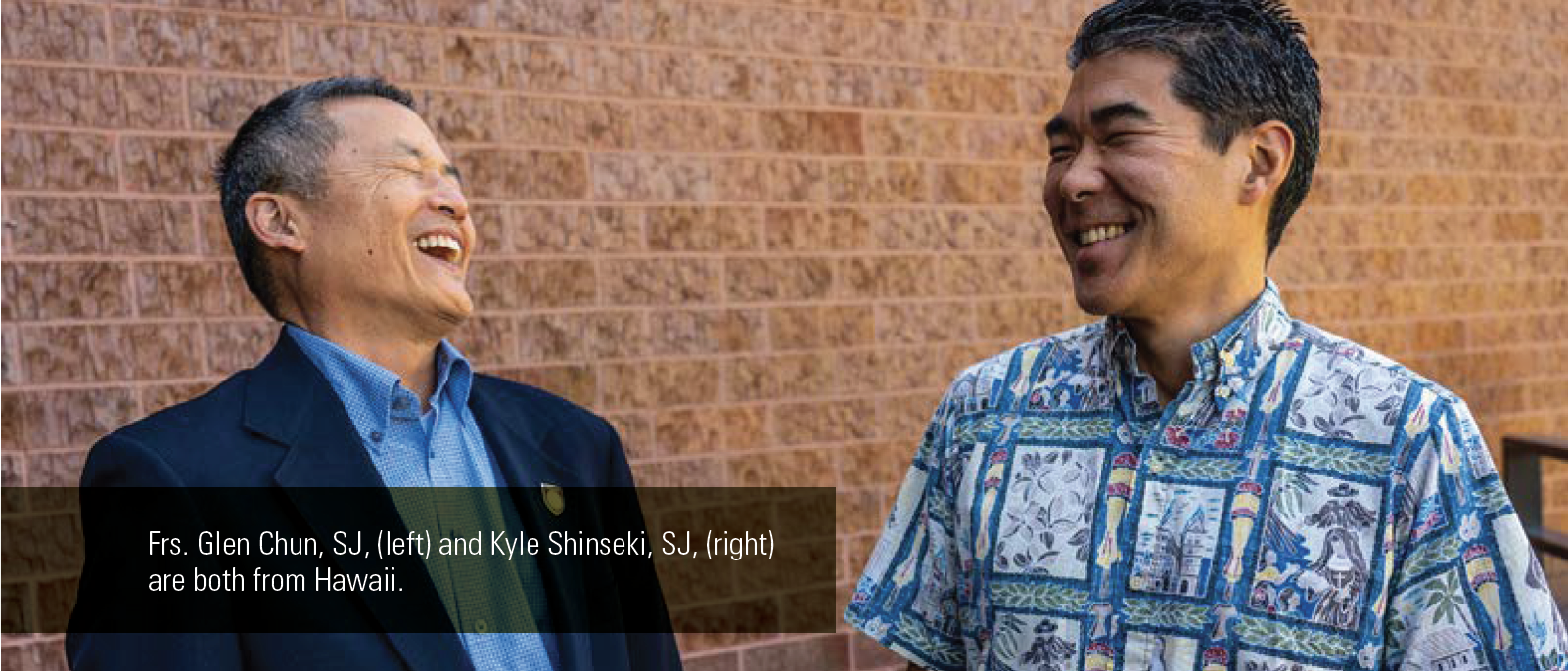
As Fr. Glen Chun, SJ, Midwest Province socius, puts it, “The way the Creighton-Hawaii connection has been nurtured so vibrantly for so many generations is a great example of how we seek to foster development of the whole person in Jesuit education. Students from Hawaii can appreciate their heritage anew by leaving the islands and journeying together to a noticeably different place while fostering traditions and experiencing interculturality and diversity. It’s like they get to take an adventure within a community.
